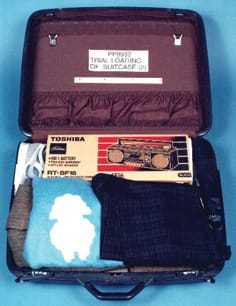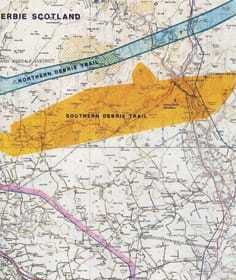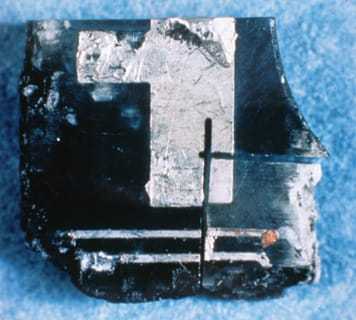About the Terrorist Bombing of Pan Am Flight 103
On 21 December 1988, Pan American flight 103, a Boeing 747, took off from London, bound for New York City. As it was climbing on its northerly flight path, it exploded over the town of Lockerbie in the Dumfries and Galloway region of southwest Scotland. In all, 270 people from 21 countries were killed, including all 259 passengers and crewmembers plus 11 people on the ground in Lockerbie.
The plastic explosive that detonated in the forward cargo hold triggered a sequence of events that led to the rapid destruction of the aircraft. Winds scattered victims and debris along an 81-mile-long corridor 845 square miles in area.

This mockup was used at the trial to demonstrate where the bomb was hidden and how it got onto Flight 103. The plastic explosives hidden in the suitcase detonated in the forward cargo hold.
The Lockerbie bombing became the subject of Britain’s largest criminal inquiry led by its smallest police force, the Dumfries and Galloway Constabulary. This widely regarded assault on a symbol of the United States, with 189 of the victims being Americans, stood as the deadliest terrorist attack on American civilians until the attacks of September 11, 2001.
The determined investigation over more than 11 years was a jigsaw-puzzle assembly by many cooperating law-enforcement, intelligence, and legal personnel from numerous countries–including a CIA electronics expert who uncovered a key piece of evidence.
In 1989, months after the plane crash and end of the formal recovery effort, a piece of scorched shirt was discovered. The piece contained a fragment of circuit board that the heat of the explosion had fused into the shirt’s polyester fabric.

Winds scattered victims and debris along an 81-mile-long corridor 845 square miles in area.
The Scots photographed the circuit-board fragment and gave a photo to the FBI, who passed a copy to the CIA where a Directorate of Science & Technology (DS&T) electronics expert observed two things that reminded him of a device he had seen before–a timer from an earlier Libyan terrorist attack. Further analysis confirmed that the fragment exactly matched part of a timer circuit manufactured specifically for the Libyans.
The trial of two Libyans convened before a Scottish court in the Netherlands in 2000. CIA’s DS&T officer was called to the stand as an expert witness. To protect his identity he was in disguise, used an alias, and had his voice altered. The CIA officer differentiated the timers of the Popular Front for the Liberation of Palestine-General Command (PFLP-GC) from the ones used by the Libyans and identified the circuit-board fragment to be from a Libyan timer. These facts were crucial because the Libyans’ defense rested on the premise that the PFLP-GC–not the Libyans–had bombed Pan Am 103.

A CIA electronics expert was able to identify elements similar to an earlier Libyan terrorist attack using this photo of the circuit-board fragment.
Terrorists have always operated in secrecy, in part because America and its allies devote advanced technical resources to uncovering and thwarting their plans. While technical experts called in after a terrorist incident provide valuable assistance to those who seek justice, CIA experts in weapons, ordnance, electronics, and other fields work in the shadows to prevent such incidents. As a matter of pride to these experts who are accustomed to anonymity, few people know the details of their lifesaving contributions to combating terrorism.
In the case of Pan Am 103, the CIA expert’s testimony on his identification of the circuit-board fragment was key evidence that led to the conviction of one of the two accused Libyan terrorists.
